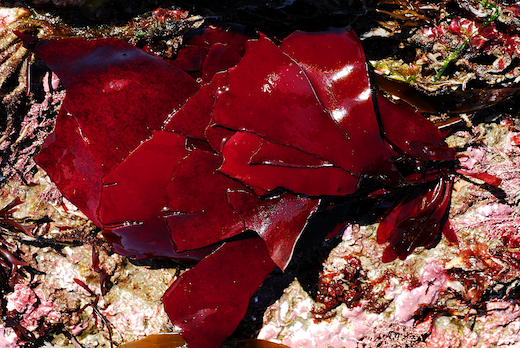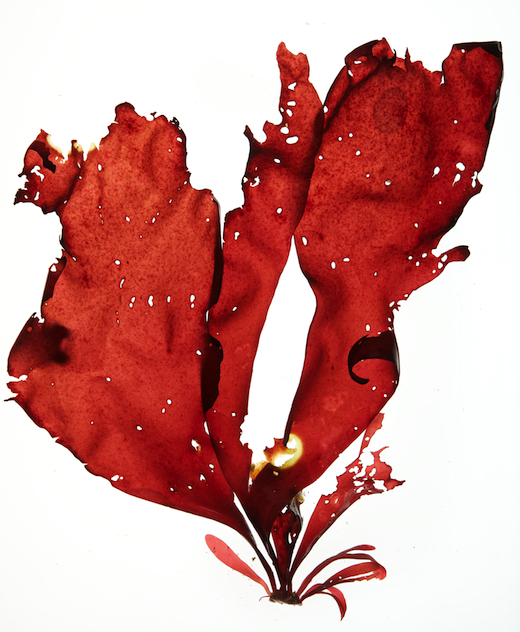Dilsea carnosa (Schimidel) O. Kuntze
Also known as D. edulis and as "False dulse". It is not edible.

Description: Dark caramine red, frequently becoming yellow-green at apices, thick,
flattened cartilaginous fronds, arising in groups of small, medium and large
from a thick, discoid holdfast (see photo below), obtuse, ovate with tapered base, to 500
mm long, 250 mm broad; sometimes with small holes. Larger blades reproducing in December and January. Stands probably persist for many years as the disk produces new blades continuously.
Habitat: On rock in shady pools, lower intertidal on rock, and shallow
subtidal to 25 m, usually on rock in kelp forests; widely distributed, common.
Similar species: This is the thickest and most cartilaginous of the
broad, leaf-like species. Can be confused with Schizymenia dubyi and Kallymenia reniformis, both of which are thinner and softer. Young plants are characteristically
ligulate. Palmaria palmata has usually one or more narrowly forking dichotomies, and is thinner and more slippery.

Species list
Photographs © M.D. Guiry





